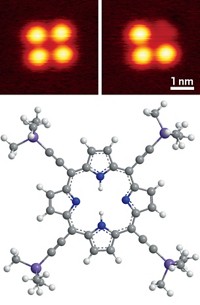Advertisement
Grab your lab coat. Let's get started
Welcome!
Welcome!
Create an account below to get 6 C&EN articles per month, receive newsletters and more - all free.
It seems this is your first time logging in online. Please enter the following information to continue.
As an ACS member you automatically get access to this site. All we need is few more details to create your reading experience.
Not you? Sign in with a different account.
Not you? Sign in with a different account.
ERROR 1
ERROR 1
ERROR 2
ERROR 2
ERROR 2
ERROR 2
ERROR 2
Password and Confirm password must match.
If you have an ACS member number, please enter it here so we can link this account to your membership. (optional)
ERROR 2
ACS values your privacy. By submitting your information, you are gaining access to C&EN and subscribing to our weekly newsletter. We use the information you provide to make your reading experience better, and we will never sell your data to third party members.
Analytical Chemistry
New Raman Method Measures Extremely Low Frequency Acoustic Vibrations
Spectra reveal information about the size, shape, and mechanical properties of nanoparticles and proteins
by Celia Henry Arnaud
December 1, 2014
| A version of this story appeared in
Volume 92, Issue 48
A new acoustic method allows researchers to obtain Raman spectra of low-frequency vibrational modes that are not usually accessible to the analytical technique. Reuven Gordon, Skyler Wheaton, and Ryan M. Gelfand of the University of Victoria, in British Columbia, call the new method extraordinary acoustic Raman, or EAR (Nat. Photonics 2014, DOI: 10.1038/nphoton.2014.283). To obtain the spectra, they combine the beams from two lasers at slightly different wavelengths to generate a “beat frequency” that modulates the electric field in laser tweezers holding a nanoparticle or protein in place. The modulation excites Raman-active vibrations that cause mechanical stretching in the particle or protein. These vibrations provide information about the size, shape, and mechanical properties of the sample. In the case of proteins, the spectra could be used to study phenomena such as allostery, in which ligand binding at one site causes conformational changes that affect binding sites elsewhere.




Join the conversation
Contact the reporter
Submit a Letter to the Editor for publication
Engage with us on Twitter